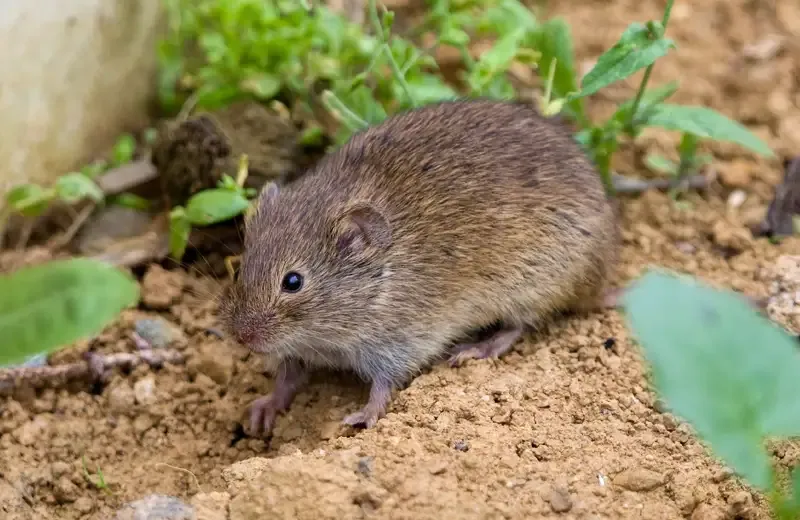Vole Parasite Control Demystified: A Full Review of Problem Detection and Effective Therapy Approaches
As property owners and yard fanatics, the breach of voles can be a relentless worry that calls for a systematic method for efficient management. By recognizing the behavior patterns of these elusive rodents, one can get beneficial understandings right into their choices and practices. From refined indications of infestation to the application of targeted control measures, browsing the realm of vole parasite control requires a mix of knowledge and strategic activity. In this detailed introduction, we will explore the nuances of vole problem discovery and explore the world of effective therapy techniques that can protect your rooms from these underground annoyances.
Comprehending Vole Actions Patterns
Understanding the elaborate habits patterns of voles is essential for successfully applying pest control measures in agricultural and property settings. Voles, tiny rodents that resemble computer mice yet with stouter bodies, are notorious for their fast recreation rates and starved hungers for plants. By diving right into their actions patterns, parasite control experts can acquire important insights into vole preferences, vulnerabilities, and practices.
Voles are mostly herbivores, preying on a variety of plants, light bulbs, roots, and tubers. They are additionally prolific tunnelers, developing intricate below ground burrow systems for nesting and foraging. By comprehending these practices, pest control specialists can tactically place catches and lure stations along vole paths and entrance factors, increasing the likelihood of successful elimination.
Additionally, knowledge of vole habits patterns can assist in developing safety nets to discourage future problems. By dealing with variables that draw in voles, such as dense vegetation cover and conveniently available food resources, building owners can make their properties less welcoming to these damaging pests - vole control. In final thought, an extensive understanding of vole actions is vital in developing lasting and effective bug control techniques
Identifying Indicators of Vole Invasion
Reliable vole parasite control starts with promptly recognizing the obvious indicators of vole infestation on properties. Furthermore, vole droppings are an additional clear sign of invasion.
In enhancement to droppings and runways, chomp marks on tree bark and plants are additionally indicators of vole task. Voles have a behavior of gnawing on the bases of shrubs and trees, which can cause damage and potentially eliminate the plants. The visibility of burrow openings in the ground shows an active vole population. Vole burrow entries are normally small and discovered in mulched or verdant locations.
Being cautious for these signs can help homeowner discover vole invasions early and take proper insect control steps to stop more damages.
Executing Targeted Control Actions
What particular approaches can be employed to properly execute targeted control procedures for vole pest monitoring on buildings? Carrying out targeted control actions for vole parasite management needs a multi-faceted strategy that combines both prevention and removal techniques.
Trapping is an additional efficient method for regulating vole populations. Live traps can be purposefully placed along vole runways or delve entryways, baited with peanut butter or apple pieces. When caught, voles need to be humanely removed to a different location to prevent reinfestation.
Rodenticides can be utilized as a last hope for severe invasions, yet care has to be worked out to protect against harm to non-target pets. When making use of rodenticides for vole control - vole pest control., it is vital to adhere to all safety and security standards and guidelines.
Green and natural Treatments
The adoption of eco aware practices can play a critical role in handling vole populaces without creating damage to the ecological community. Eco-friendly and natural solutions use a sustainable method to vole pest control, reducing using damaging chemicals and promoting biodiversity in the impacted areas.
One efficient all-natural technique is the use of predator urine or predator decoys. Killers like owls, snakes, and foxes are the vole's all-natural adversaries. By tactically placing killer pee or decoys around the ravaged areas, voles may be deterred from clearing up in those places.
In addition, growing vole-resistant vegetation can aid in decreasing vole damage. Plants such as daffodils, crown imperials, and Siberian squill are understood to be unappealing to voles and can serve as natural repellents.
In addition, creating physical obstacles like cord mesh or gravel around prone plants can prevent voles from accessing them. These barriers can assist protect gardens and landscapes without presenting any kind of risk to the atmosphere or various other non-target species. By integrating these all-natural and eco-friendly solutions, vole infestations can be handled effectively while preserving eco-friendly balance.
Long-Term Avoidance Approaches
To sustainably resolve vole infestations over time, applying proactive procedures is critical for lasting avoidance strategies. By reducing thick greenery, mulch, and mess around structures, you can make your home much less appealing to voles.
Regular tracking of vole task is essential for very early detection of any type of indicators of invasion. Establishing vole traps can help in managing their population before it comes to be a full-blown infestation. It is additionally crucial to seal off any kind of entrance points to frameworks or buildings to stop voles from getting gain access to.

Conclusion
To conclude, comprehending vole behavior patterns, identifying indicators of invasion, executing targeted control measures, utilizing eco-friendly and all-natural treatments, and applying lasting prevention methods are vital action in effectively taking care of vole invasions. By being proactive and taking the needed steps to deal with vole problems promptly, individuals can successfully stop and control vole infestations in their residential properties.
